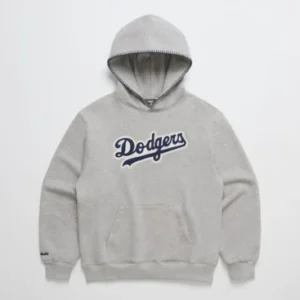Understanding Hand Block Print Fabric: A Legacy in Every Thread
Hand block print fabric is not just a textile—it is a centuries-old legacy that reflects the brilliance of artisan craftsmanship and cultural heritage. This unique art form involves the manual printing of fabric using hand-carved wooden blocks, producing intricate and vivid designs that are impossible to replicate through machine printing. At our studio, we honor this tradition by curating and offering the finest hand block print fabrics to connoisseurs of authentic textile art.
The Origin and History of Hand Block Printing
The art of hand block printing has deep roots in India, China, and the Middle East, with India being globally recognized for its outstanding mastery in this craft. Originating over 2,000 years ago, Indian artisans perfected the process using natural dyes, vegetable colors, and wooden blocks passed down through generations.
Regions such as Bagru, Sanganer, and Jaipur in Rajasthan are famed for their signature styles, each identifiable by their color palette, motifs, and printing techniques. What makes hand block printing exceptional is that every piece tells a story, often inspired by nature, mythology, and geometric patterns.
The Craftsmanship Behind Hand Block Print Fabric
Creating hand block print fabric is an intensive and meticulous process involving several critical stages:
1. Block Carving
The first step is crafting the printing blocks—typically made from seasoned sheesham (Indian rosewood). Skilled artisans carve intricate patterns into the wood, sometimes taking days to complete a single block. These blocks may include outlines, fillers, and fine detailing, forming layers in the final design.
2. Fabric Preparation
High-quality cotton, silk, or linen is selected and washed thoroughly to eliminate starch and impurities. The fabric is then dried in natural sunlight and soaked in a mordant solution to enhance dye absorption.
3. Printing Process
Using a flat printing table, artisans dip the carved block into the natural dye and stamp it onto the fabric by hand, ensuring precision with each impression. Often, multiple blocks are used for a single design, requiring absolute alignment and a steady hand.
4. Dyeing and Washing
Once printed, the fabric is left to dry naturally, then steamed or boiled to fix the dyes. Post-dyeing, it undergoes a thorough wash and is finally dried and ironed for a polished finish.
This labor-intensive method ensures that no two pieces of hand block print fabric are identical, lending each fabric an individual charm and authenticity.
Design Elements of Hand Block Print Fabric
Hand block print fabrics are celebrated for their bold motifs, symmetric alignments, and earthy hues. Common patterns include:
-
Floral vines and paisleys
-
Peacocks, elephants, and birds
-
Geometric shapes like diamonds, waves, and chevrons
-
Mythological scenes and cultural symbols
The color palette typically features natural shades like indigo, rust, maroon, ochre, and black, derived from plant extracts, turmeric, and minerals.
Applications: Where Hand Block Print Fabric Shines
1. Fashion Industry
From boho dresses, kurtas, tunics, to scarves, hand block printed fabrics are a staple in ethnic and contemporary fashion. Designers use it for:
-
Unstitched dress materials
-
Elegant sarees and dupattas
-
Statement skirts, blouses, and trousers
Its breathable nature and soft texture make it ideal for all-season wear.
2. Home Décor
Hand block print fabric adds a touch of artisan charm to interiors. Popular décor uses include:
-
Cushion covers and curtains
-
Bed linens and quilts
-
Tablecloths, runners, and wall hangings
The intricate detailing and cultural essence of these prints bring a warm and earthy ambiance to any space.
3. Accessories and Crafts
The popularity of hand block print fabric has also spread into bags, journals, upholstery, and art pieces. Crafters and DIY enthusiasts often use fabric remnants for patchwork, quilting, and embroidery projects.
Why Choose Hand Block Print Fabric
Choosing hand block print fabric is a conscious decision that supports slow fashion, sustainability, and indigenous craftsmanship. Here are key benefits:
-
Eco-Friendly: Made with natural dyes and minimal water usage.
-
Ethically Produced: Handcrafted by skilled artisans with fair-trade practices.
-
Durable and Comfortable: Especially when printed on pure cotton and silk.
-
Timeless Aesthetic: Blends tradition with modern design sensibilities.
-
One-of-a-Kind: Each piece bears unique imperfections that add to its authenticity.
Caring for Hand Block Print Fabrics
To ensure the longevity and vibrancy of your hand block print fabric:
-
Hand wash separately in cold water for the first few washes.
-
Use mild, non-chemical detergent.
-
Avoid direct sunlight while drying.
-
Iron on low heat on the reverse side.
These steps will preserve the colors and textures, maintaining their handcrafted allure.
How We Ensure Quality and Authenticity
We collaborate directly with master artisans and craft clusters across India, ensuring the hand block print fabric you receive is authentic, ethically produced, and of premium quality. Our collections undergo rigorous quality checks, from block sharpness to dye consistency and fabric integrity.
Where to Buy Hand Block Print Fabric
Our curated online store features an extensive range of hand block printed cottons, silks, linens, and blends, suited for both retail and wholesale needs. Whether you’re a designer, boutique owner, or DIY creator, we provide:
-
Global shipping
-
Custom design services
-
Bulk order options
-
New collections added monthly
Conclusion: Celebrate Tradition Through Every Thread
In a world increasingly dominated by mass production, hand block print fabric offers a refreshing return to craftsmanship, detail, and soul. It brings together heritage, sustainability, and beauty, making it not just a fabric but a movement in mindful living and design.








